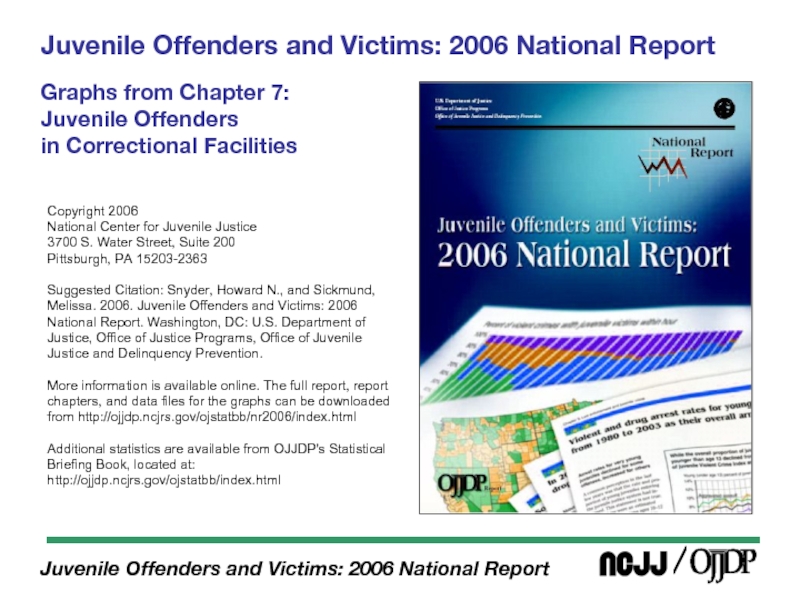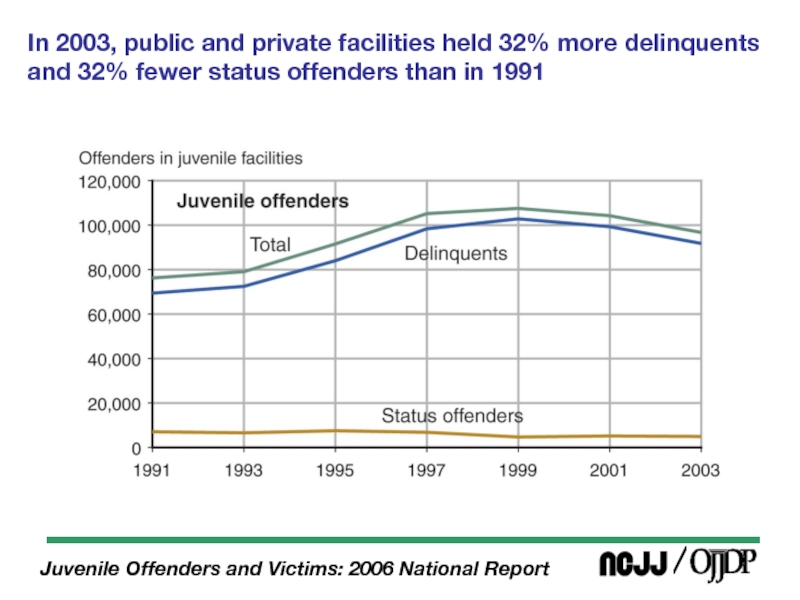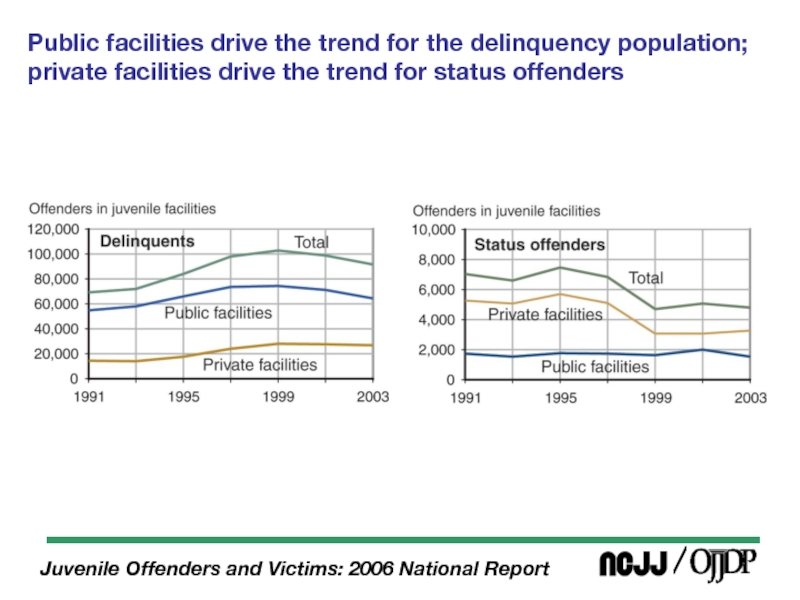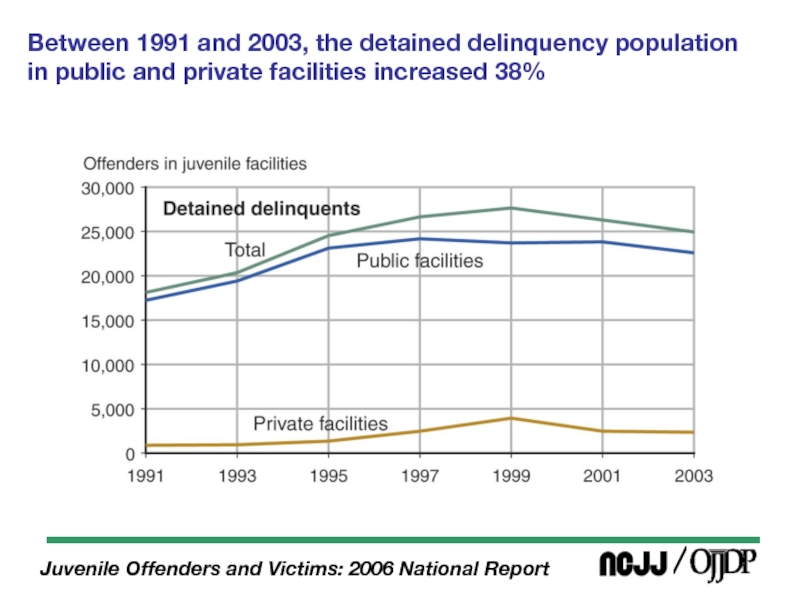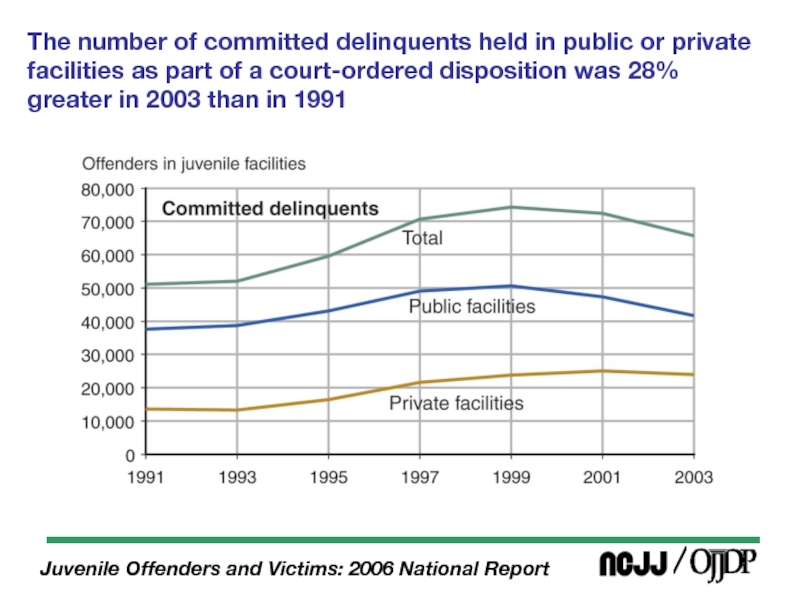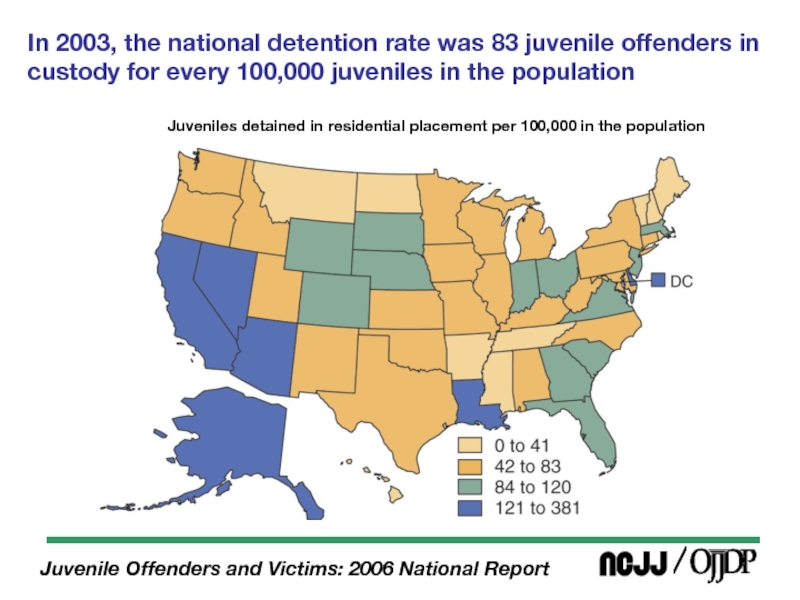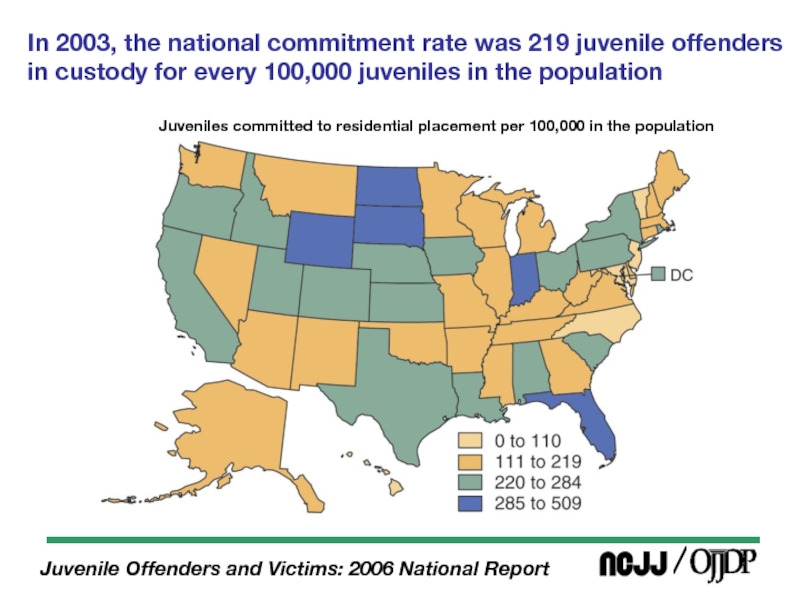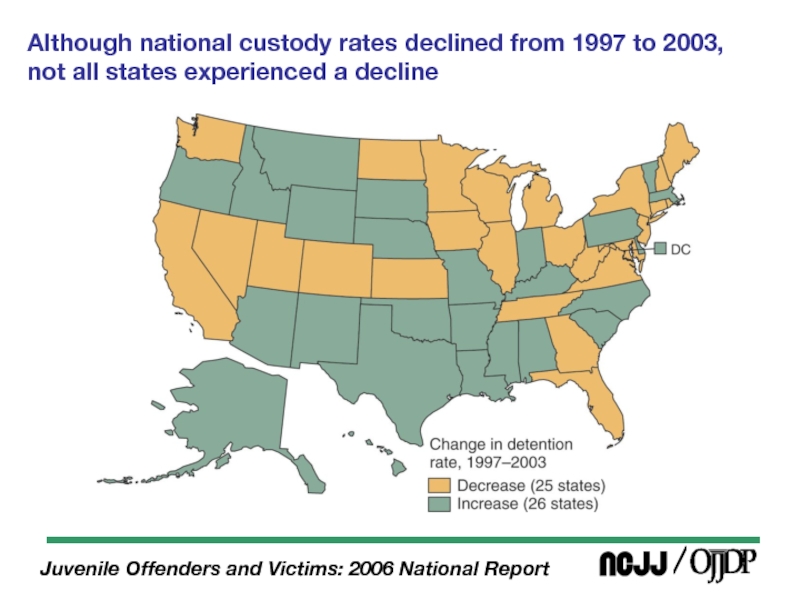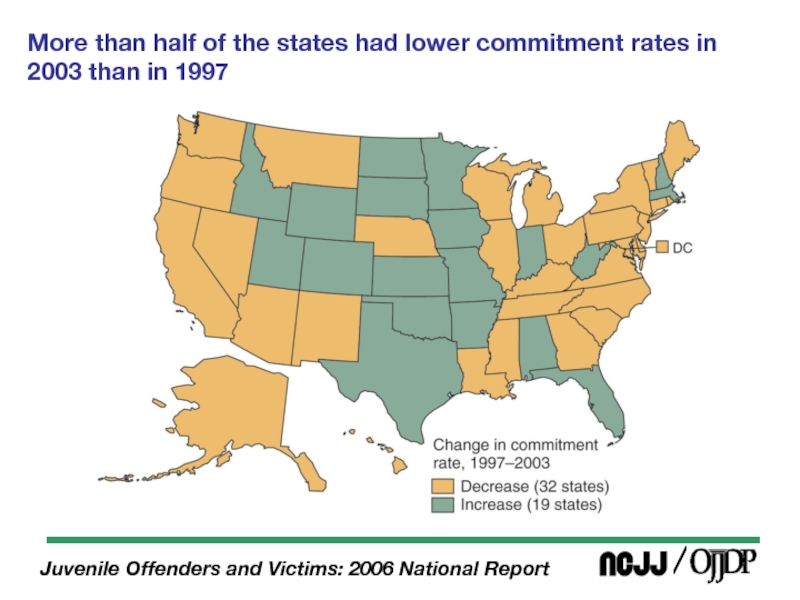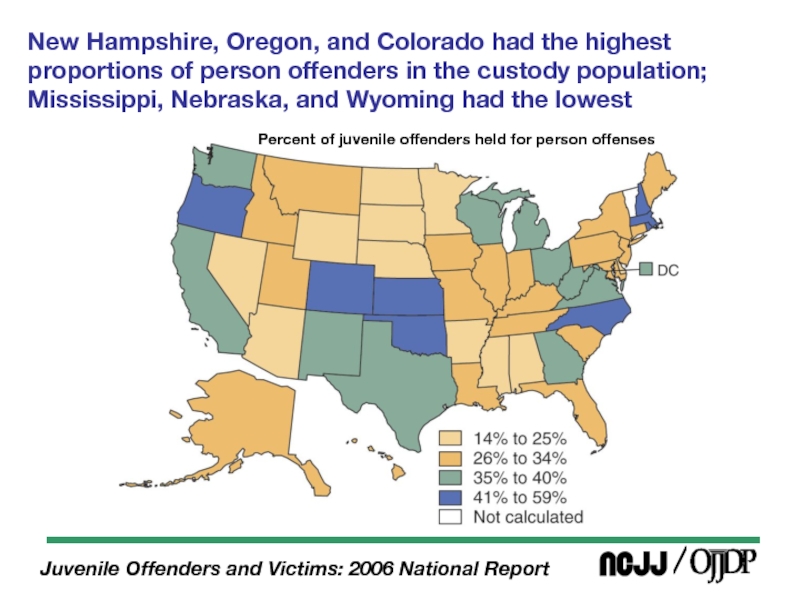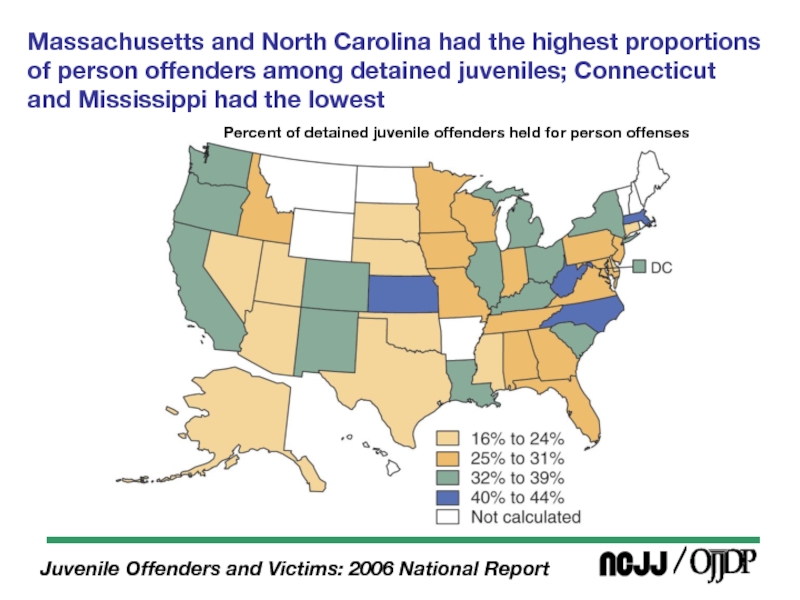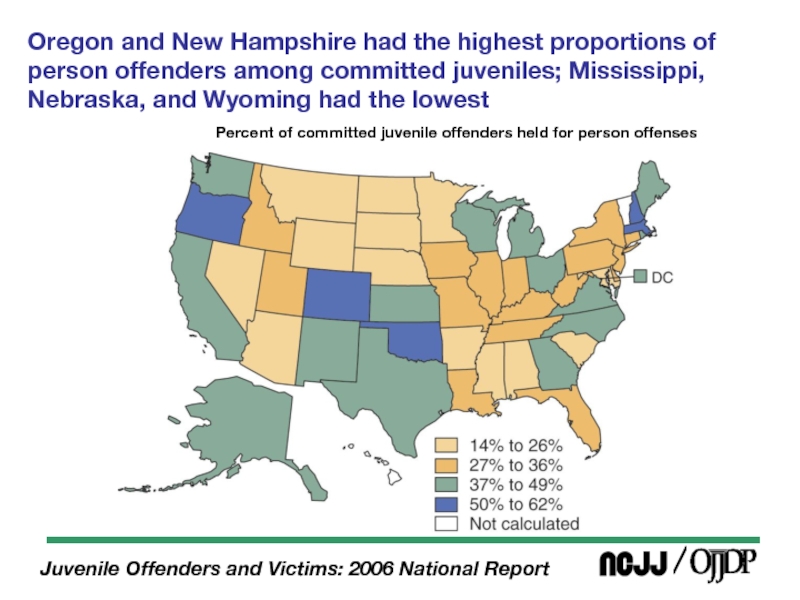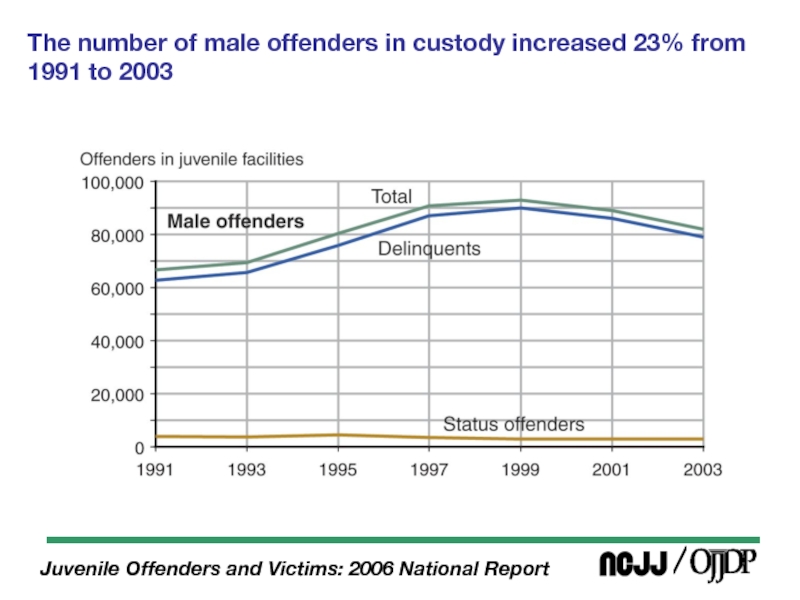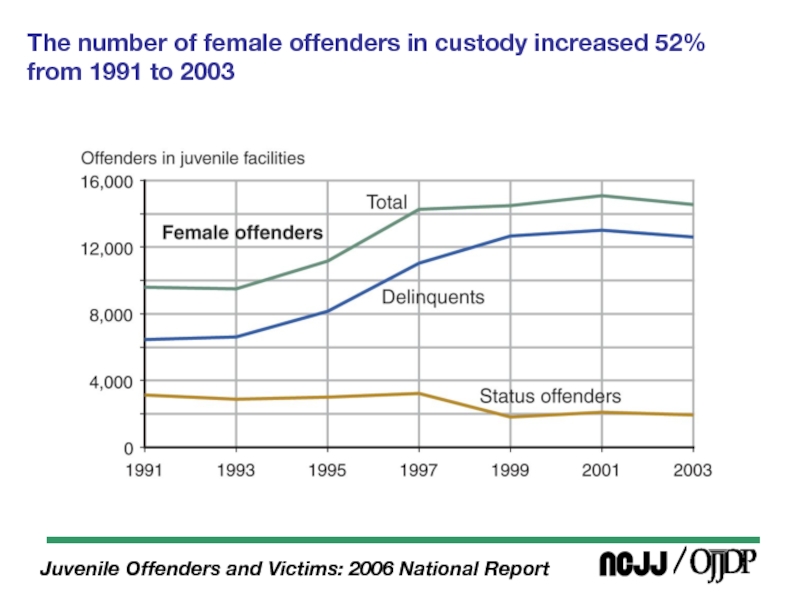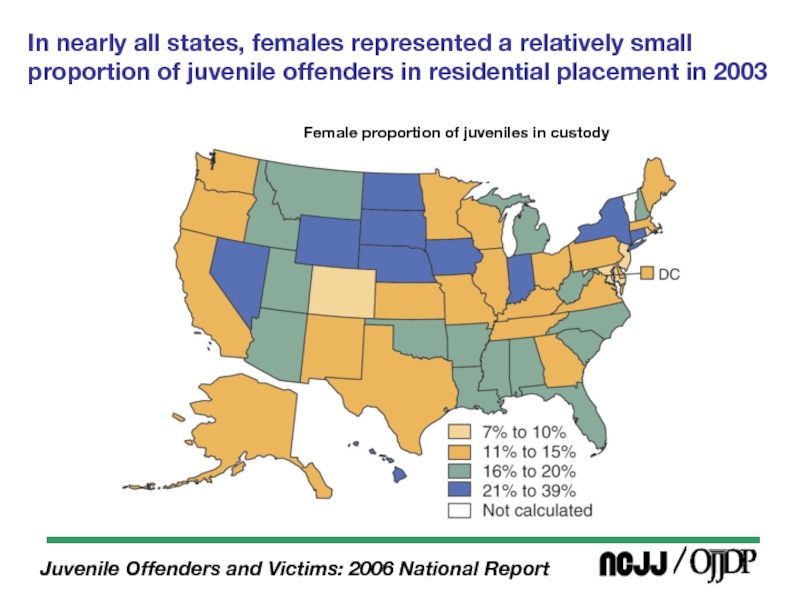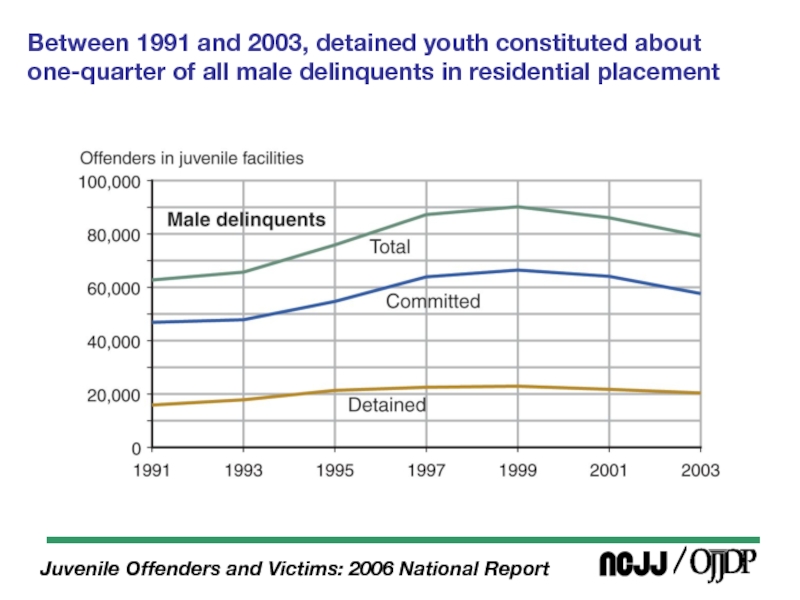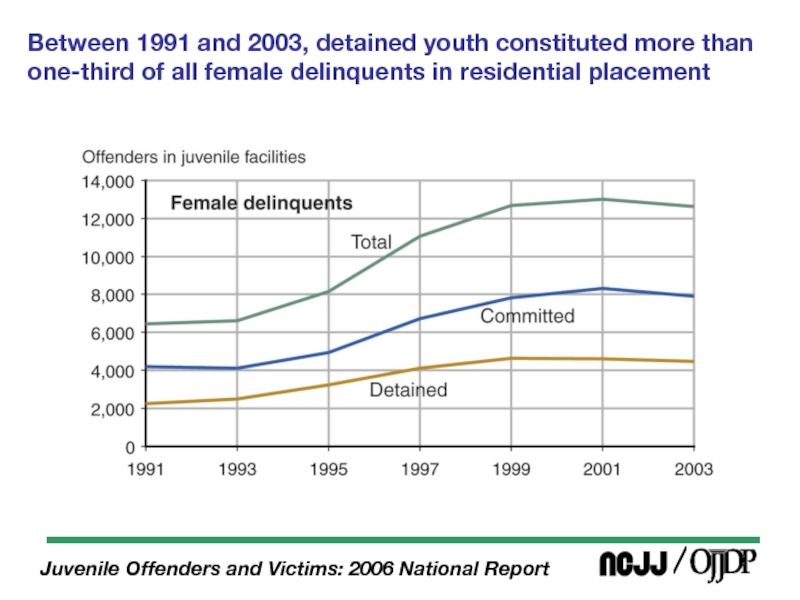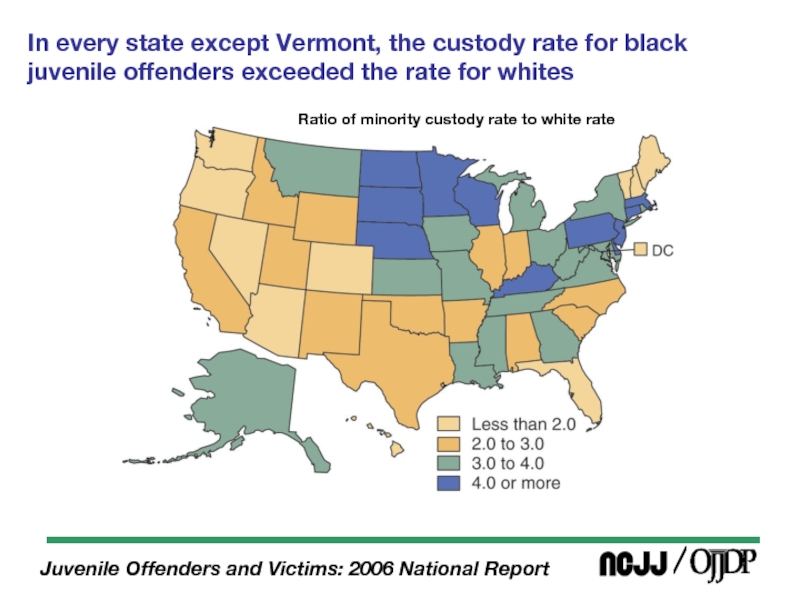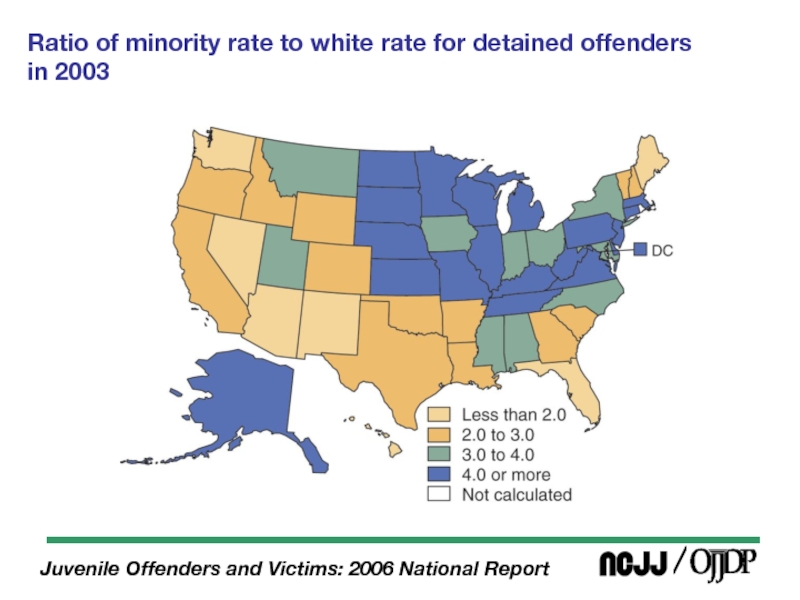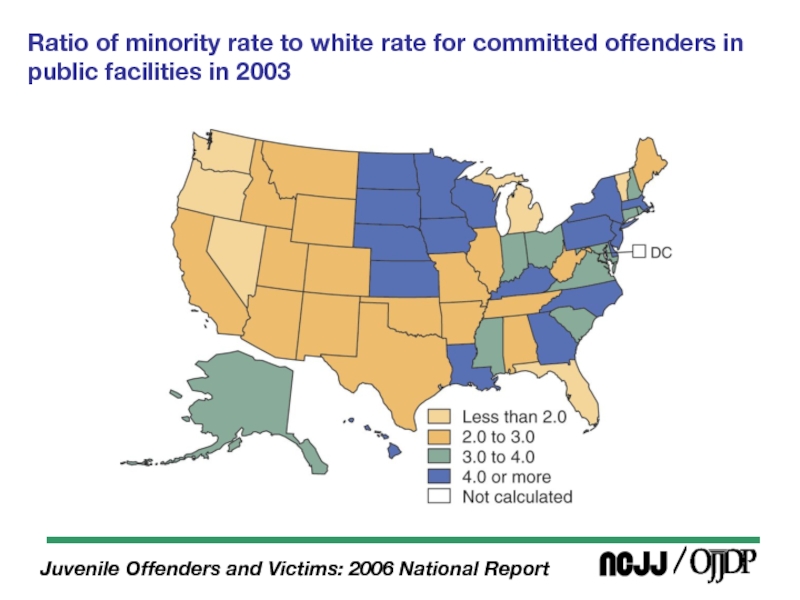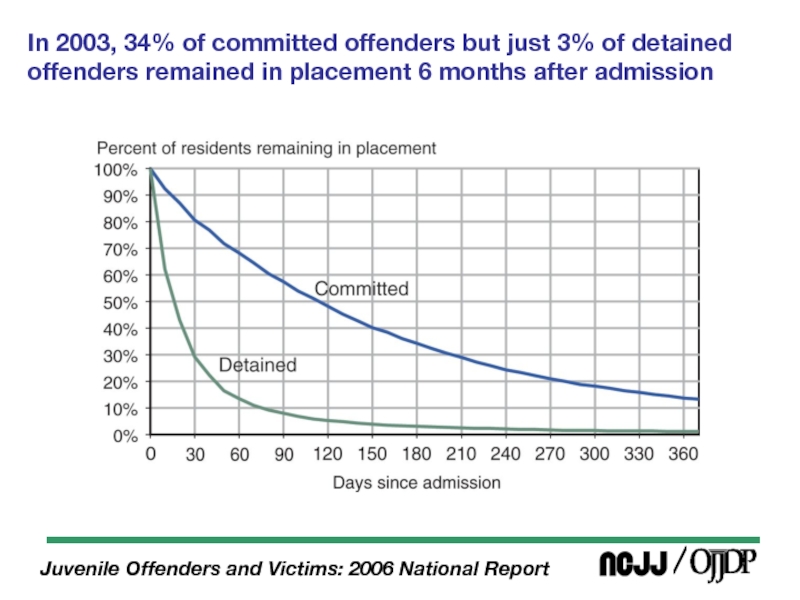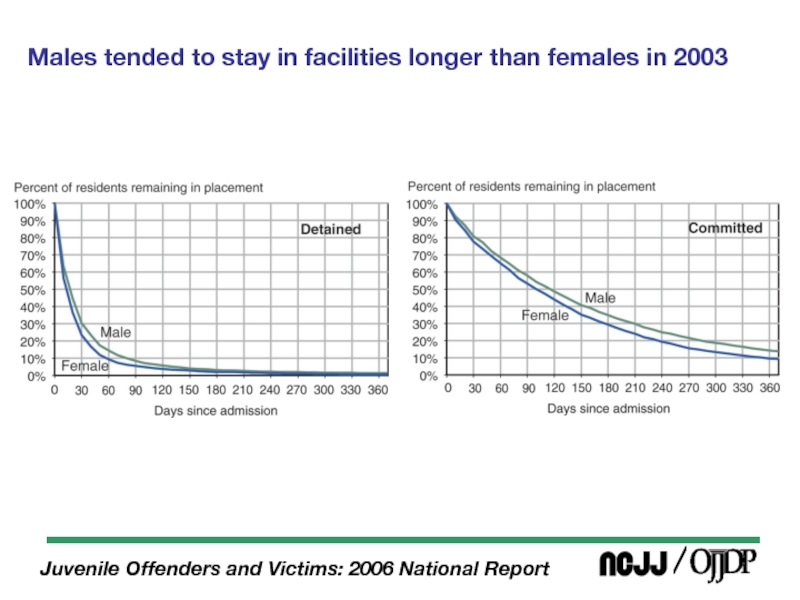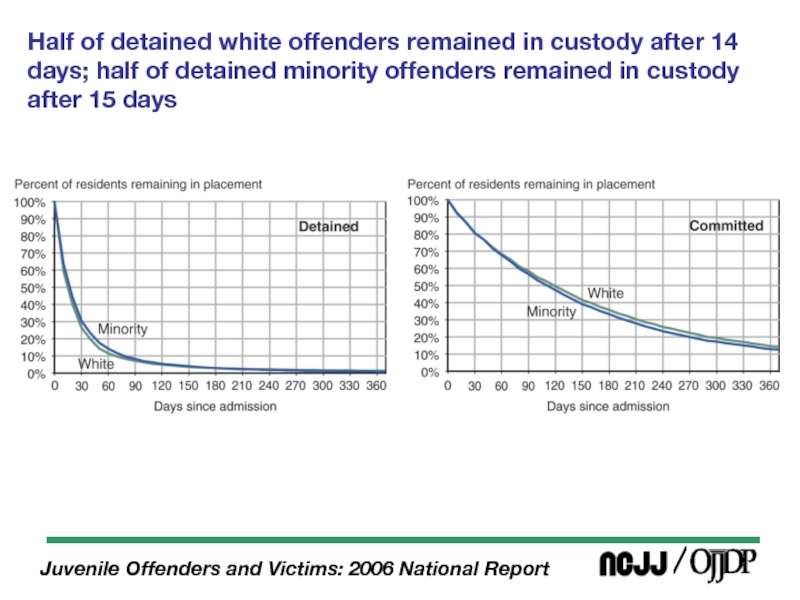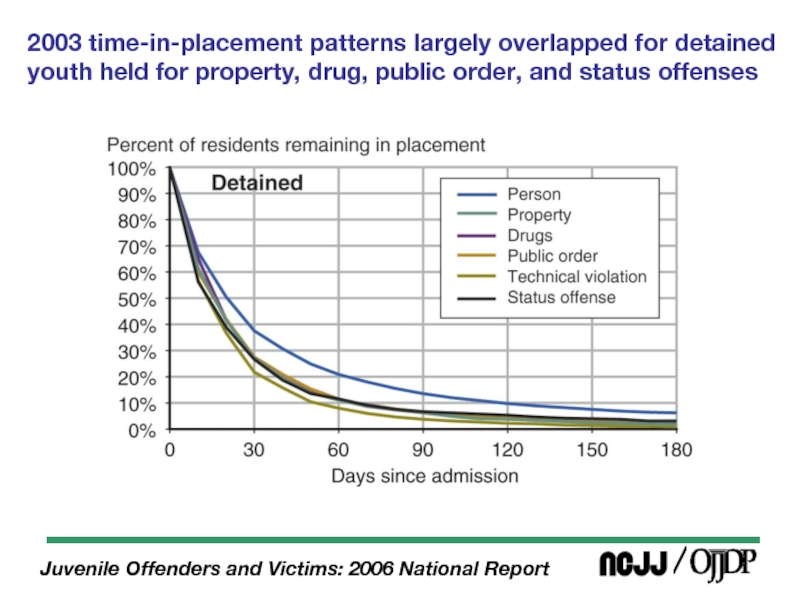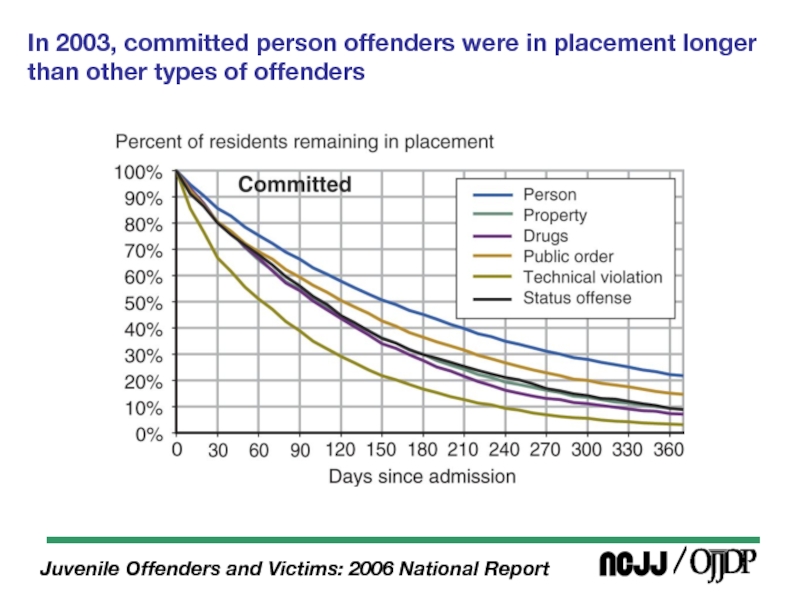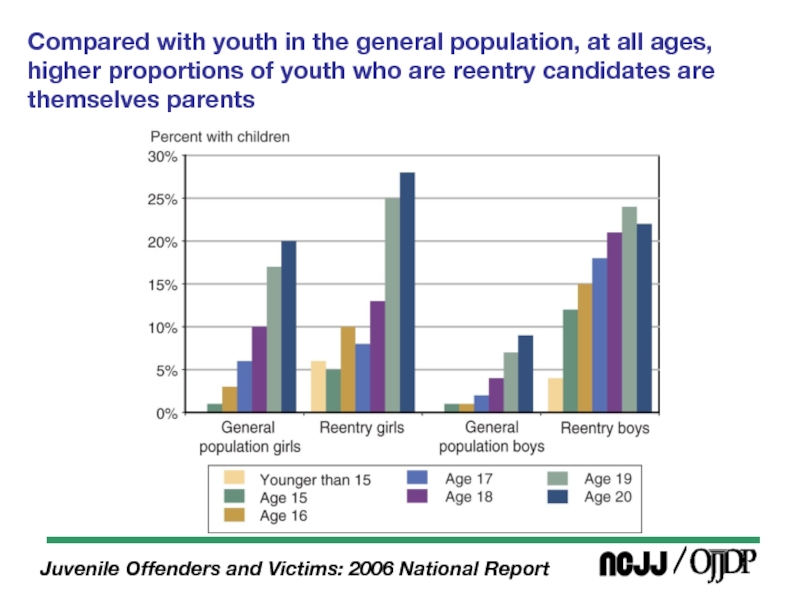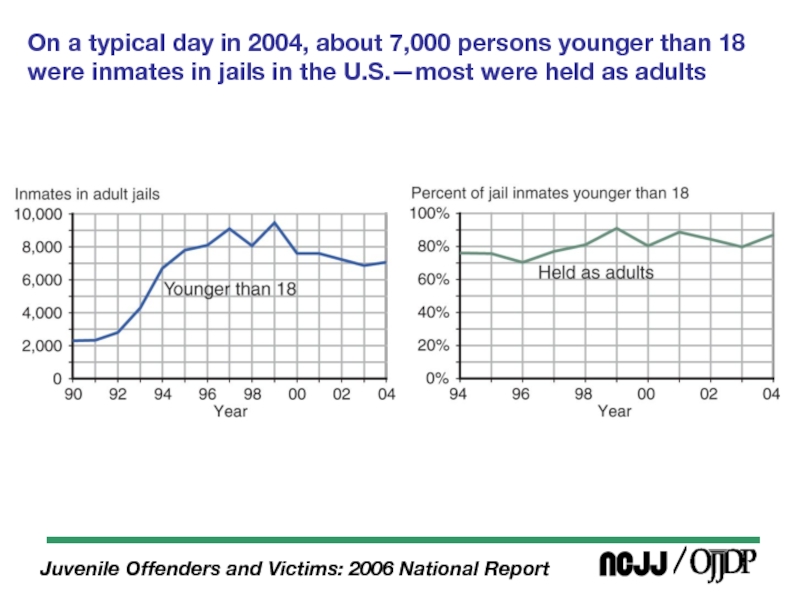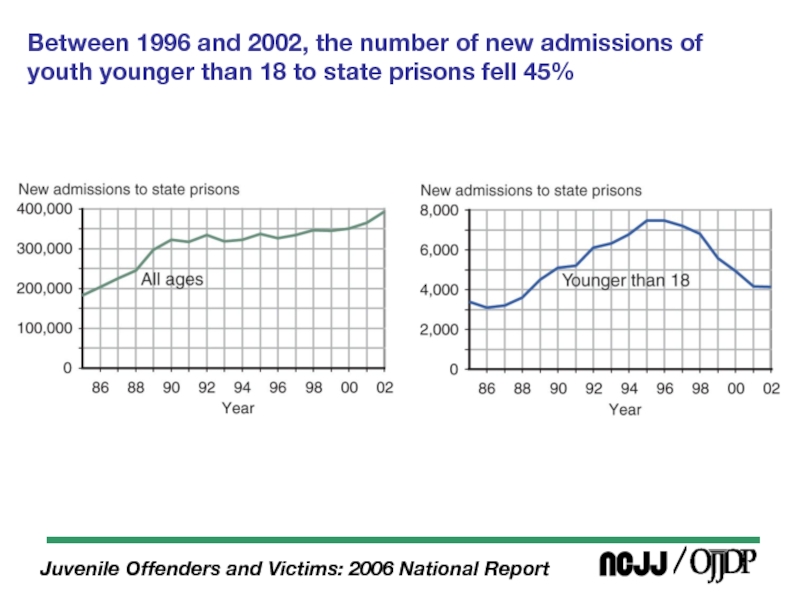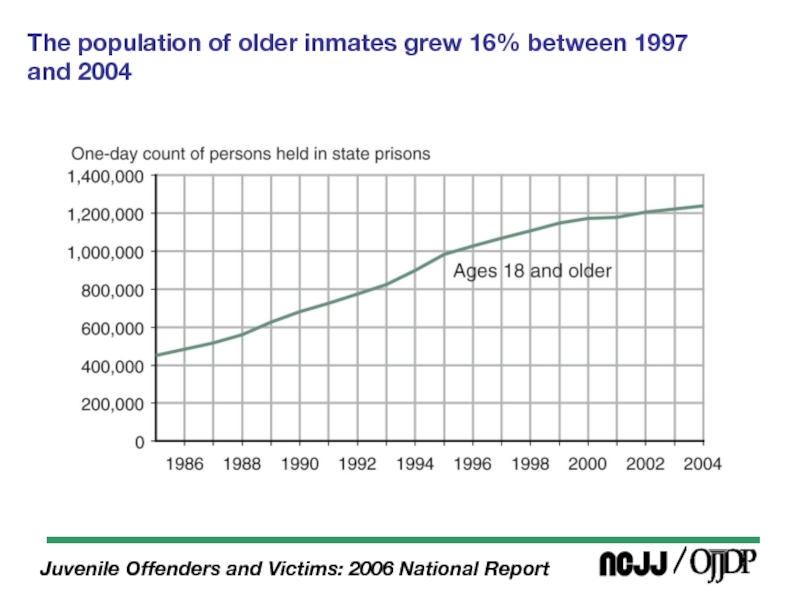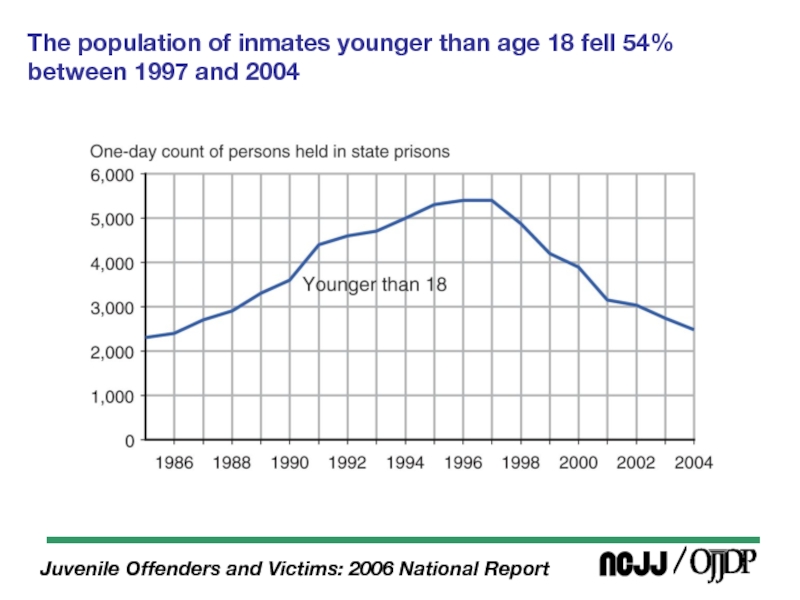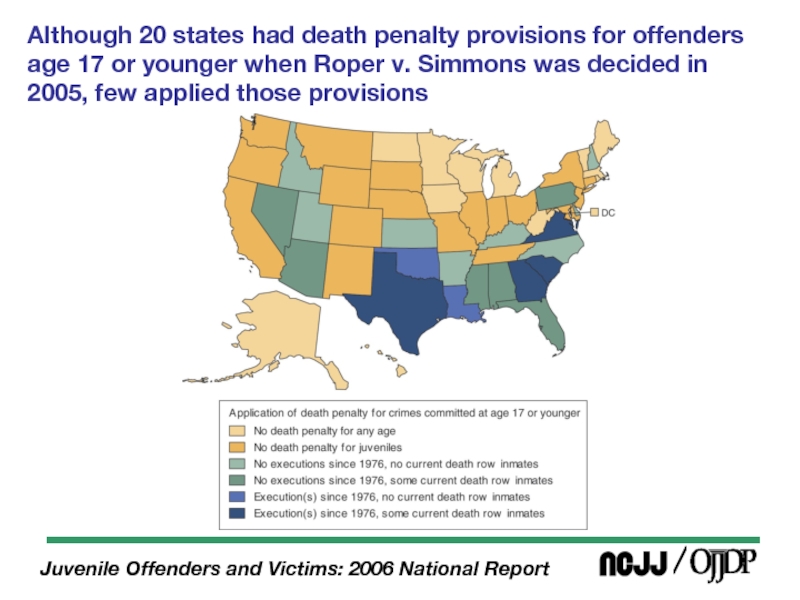Copyright 2006
National Center for Juvenile Justice
3700 S. Water Street, Suite 200
Pittsburgh, PA 15203-2363
Suggested Citation: Snyder, Howard N., and Sickmund, Melissa. 2006. Juvenile Offenders and Victims: 2006 National Report. Washington, DC: U.S. Department of Justice, Office of Justice Programs, Office of Juvenile Justice and Delinquency Prevention.
More information is available online. The full report, report chapters, and data files for the graphs can be downloaded from http://ojjdp.ncjrs.gov/ojstatbb/nr2006/index.html
Additional statistics are available from OJJDP's Statistical Briefing Book, located at:
http://ojjdp.ncjrs.gov/ojstatbb/index.html
- Главная
- Разное
- Дизайн
- Бизнес и предпринимательство
- Аналитика
- Образование
- Развлечения
- Красота и здоровье
- Финансы
- Государство
- Путешествия
- Спорт
- Недвижимость
- Армия
- Графика
- Культурология
- Еда и кулинария
- Лингвистика
- Английский язык
- Астрономия
- Алгебра
- Биология
- География
- Детские презентации
- Информатика
- История
- Литература
- Маркетинг
- Математика
- Медицина
- Менеджмент
- Музыка
- МХК
- Немецкий язык
- ОБЖ
- Обществознание
- Окружающий мир
- Педагогика
- Русский язык
- Технология
- Физика
- Философия
- Химия
- Шаблоны, картинки для презентаций
- Экология
- Экономика
- Юриспруденция
Juvenile Offenders and Victims: 2006 National Report презентация
Содержание
- 1. Juvenile Offenders and Victims: 2006 National Report
- 2. In 2003, public and private facilities held
- 3. Public facilities drive the trend for the
- 4. Between 1991 and 2003, the detained delinquency population in public and private facilities increased 38%
- 5. The number of committed delinquents held in
- 6. In 2003, the national detention rate was
- 7. In 2003, the national commitment rate was
- 8. Although national custody rates declined from 1997 to 2003, not all states experienced a decline
- 9. More than half of the states had lower commitment rates in 2003 than in 1997
- 10. New Hampshire, Oregon, and Colorado had the
- 11. Massachusetts and North Carolina had the highest
- 12. Oregon and New Hampshire had the highest
- 13. The number of male offenders in custody increased 23% from 1991 to 2003
- 14. The number of female offenders in custody increased 52% from 1991 to 2003
- 15. In nearly all states, females represented a
- 16. Between 1991 and 2003, detained youth constituted
- 17. Between 1991 and 2003, detained youth constituted
- 18. In every state except Vermont, the custody
- 19. Ratio of minority rate to white rate for detained offenders in 2003
- 20. Ratio of minority rate to white rate for committed offenders in public facilities in 2003
- 21. In 2003, 34% of committed offenders but
- 22. Males tended to stay in facilities longer than females in 2003
- 23. Half of detained white offenders remained in
- 24. 2003 time-in-placement patterns largely overlapped for detained
- 25. In 2003, committed person offenders were in placement longer than other types of offenders
- 26. Compared with youth in the general population,
- 27. On a typical day in 2004, about
- 28. Between 1996 and 2002, the number of
- 29. The population of older inmates grew 16% between 1997 and 2004
- 30. The population of inmates younger than age 18 fell 54% between 1997 and 2004
- 31. Although 20 states had death penalty provisions
Слайд 1Juvenile Offenders and Victims: 2006 National Report Graphs from Chapter 7: Juvenile
Слайд 2In 2003, public and private facilities held 32% more delinquents and
Слайд 3Public facilities drive the trend for the delinquency population; private facilities
Слайд 4Between 1991 and 2003, the detained delinquency population in public and
Слайд 5The number of committed delinquents held in public or private facilities
Слайд 6In 2003, the national detention rate was 83 juvenile offenders in
Juveniles detained in residential placement per 100,000 in the population
Слайд 7In 2003, the national commitment rate was 219 juvenile offenders in
Juveniles committed to residential placement per 100,000 in the population
Слайд 8Although national custody rates declined from 1997 to 2003, not all
Слайд 10New Hampshire, Oregon, and Colorado had the highest proportions of person
Percent of juvenile offenders held for person offenses
Слайд 11Massachusetts and North Carolina had the highest proportions of person offenders
Percent of detained juvenile offenders held for person offenses
Слайд 12Oregon and New Hampshire had the highest proportions of person offenders
Percent of committed juvenile offenders held for person offenses
Слайд 15In nearly all states, females represented a relatively small proportion of
Female proportion of juveniles in custody
Слайд 16Between 1991 and 2003, detained youth constituted about one-quarter of all
Слайд 17Between 1991 and 2003, detained youth constituted more than one-third of
Слайд 18In every state except Vermont, the custody rate for black juvenile
Ratio of minority custody rate to white rate
